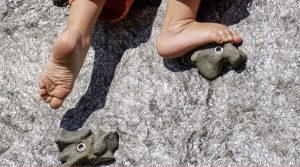Tree swings are an irresistible temptation to many. Whether you can sit on an old tire, a weathered board, or a vine, something is soothing about the movements back and forth, and up and down. If you have a large and robust tree in your yard, you may have considered using it to hold a homemade swing. If you know the techniques and tricks of the professionals, you can quickly learn how to set up a swing that will last a lifetime with proper planning and care.
Choose your tree carefully
There are several things to seriously consider in choosing which tree you will use to hang your swing. First, you will want a strong, healthy tree that is disease and insect free. If you have any reservations or just want to be certain you’ve picked correctly, call a tree service or an arborist to inspect your tree.
The age of the tree has an obvious effect on the length of time it will serve as safe support for a swing. About half the species’ maturation age gives you adequate support and a reasonable period that it will retain its strength. Older trees are closer to dying, and younger trees are not yet strong enough.
The location of the tree is another point that might make your perfect tree a nightmare in the future. Is it close to a structure, other trees, sidewalk, or street? If so, there may be a good reason not to use your chosen tree. For safety’s sake, you need at least 12 feet in front and 10 feet behind the swing to avoid hitting anything or anyone.
The ground under and around the swing should be level to prevent falls from leading to more injury. The material should be soft such as grass, mulch, recycled rubber, or wood chips. Some intrepid homeowners even use a swing to launch themselves into a pond or lake.
Ropes are important
The first question you may have is how much rope do I need? To arrive at the correct length for a double-rope swing, you simply multiply the height of your swing from the ground and add another four yards. For a single-rope swing, just cut that number in half. The four extra yards is an allowance for the overhang of the tree and space under the seat.
Rope diameters of either 3/8 or 5/8-inch work just fine for a swing. The common fibers used in making swings is polypropylene, which is durable, waterproof, and lightweight. Another choice is a poly-twist rope. There are two basic types of rope, twisted and braided. Experts recommend that you choose the type of rope that is the strongest regardless of type. Inspect the swing’s ropes each year for wear. A good rope should last about five years.
The age of the tree has an obvious effect on the length of time it will serve as safe support for a swing. About half the species’ maturation age gives you adequate support and a reasonable period that it will retain its strength. Older trees are closer to dying, and younger trees are not yet strong enough.
The location of the tree is another point that might make your perfect tree a nightmare in the future. Is it close to a structure, other trees, sidewalk, or street? If so, there may be a good reason not to use your chosen tree. For safety’s sake, you need at least 12 feet in front and 10 feet behind the swing to avoid hitting anything or anyone.
The ground under and around the swing should be level to prevent falls from leading to more injury. The material should be soft such as grass, mulch, recycled rubber, or wood chips. Some intrepid homeowners even use a swing to launch themselves into a pond or lake.
Knots are really important
If your swing ever breaks, it will probably be at the knots that hold the swing seat safely to the tree limb. There are several that will stand you in good stead. The first is the double-running bowline knot double-running bowline knot. This knot is used if the branch holding your swing is far above your head. It will let you fasten the knot without climbing the tree. The knot also has the advantage of not strangling, therefore killing, the limb.
The next most used knot is the buntline hitch knot . This knot is an old sailor’s knot that will continue to tighten as weight is applied, so it gets stronger the more it is used. If a tree’s bark isn’t strong enough, this knot may damage the limb.
Choices of seats
There are many materials that can make a fine swing seat. Wooden tree swings are always popular. There are wooden seats that are shaped like the straight board block we all remember. They also come in a disc shape that is made for the younger or more active swingers. Toddler seats with sides and a restraining bar are popular as well.
Of course, tire swings are iconic. Used, recycled tractor tires are ideal. You can attach the entire tire in a horizontal configuration. This will best fit a teen or adult. For younger and smaller children, half of the large tire innertubes can be attached like a regular swing seat.
Don’t assume the seat should only accommodate one person. On the right tree limb, a porch swing built for two can be a great use of a strong tree limb.
The next most used knot is the buntline hitch knot . This knot is an old sailor’s knot that will continue to tighten as weight is applied, so it gets stronger the more it is used. If a tree’s bark isn’t strong enough, this knot may damage the limb.








